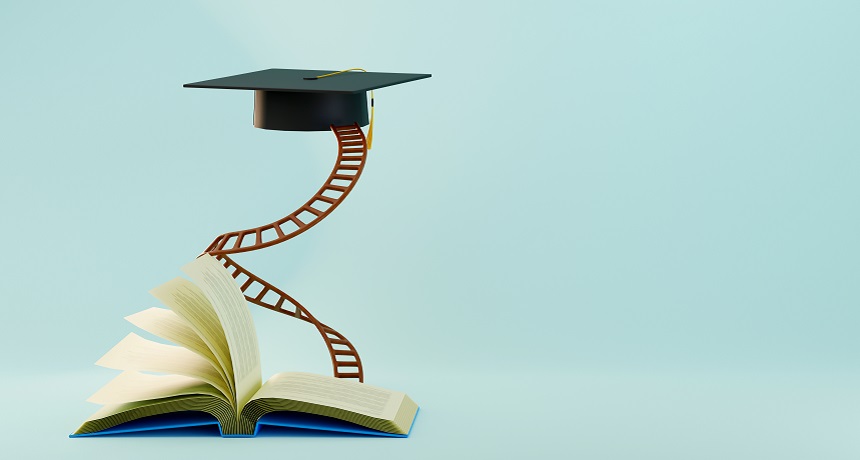Simplifying Learning Experience Design
What is learning experience design already? We could talk about ADDIE or other models but that's just more technical words. In a nutshell, learning experience design is the science behind planning an engaging learning experience. It is the art and science of transforming learning from feeling like a chore to something fun, engaging, and impactful!
The Learning Experience Design Process
I like examples, so let's say we need some five-year-olds to learn addition. An educator can explain the concept to them all they want but what the kids are probably thinking about is pizza. So, was the learning effective? What's the point of putting all that effort if the learners aren't retaining the information? In our example, at the end of the day, what we need from the kids is to be able to add three single-digit numbers, and if they are not able to do that, then all the effort was in vain. This brings us to the next important point...
1. Learning Objectives
A learning objective clearly defines what is expected by the end of a lesson, course, learning period, or whatever you want to call it. This is basically our end goal. To reach this end goal, in our case, adding three single-digit numbers, we need to ensure the learners are engaged, otherwise, they might just daydream about pizza...and now we made the kids hungry, which was not our objective.
2. Analyze The Learner
For the learners to learn effectively, we need to analyze them in terms of their competency level, interest level, likes and dislikes, etc. This is a vital step before designing or planning learning activities. So, the kids like pizza and they are already able to add two single-digit numbers, but they don't like lectures. Once they see the board they just want to doze off. Great...let's see what we can do with that.
3. Methodology
To engage the learners, we need to map their interest level with the complexity of the content. If the learners are not interested in the content, then even if it's straightforward you may not reach your objective. In the case of our five-year-olds who are learning math, they may have a low interest level because they did not decide to learn addition, nor do they care. So, what do we do? What is the methodology to follow? Role-playing, scenario-based learning! Kids like to play games, so let’s explore how a learning experience can be designed based on that.
4. Designing The Learning Experience
This is where we can plan out the learning activities based on what we know about them, and what our learning objective is. We decided to go for a role-playing activity. Let's create a pizza shop where the educator is the waitress who has all the orders (this could be an in-person or online game). The kids take turns being the chef, where they are told that each order has to have a total of 12 toppings. For example, the first customer asks for four mushrooms, three olives, and five pieces of pepperoni. The kid is then asked to make sure the total toppings are correct. This way, the learners are able to link addition to a real-life setting which will enable them to transfer the knowledge later. But is this what a learning experience designer (LXD) does? Surely, they are not the ones that deliver the learning. This brings us to the LXD’s tasks.
5. Roles And Responsibilities
So, what was the LXD's role in all this? Typically, the LXD is responsible for planning out all aspects of a learning journey, based on analysis, to be user-friendly and engaging. In the pizza example, if the learning needs to be conducted synchronously face-to-face in school after analysis of the learner and need, the content will be gathered from the expert in the subject (in this case, the teacher) and a lesson plan prepared incorporating the items necessary for a teacher to carry the plan out in class.
If the learning is needed asynchronously, then an online game can be created where the LXD would plan and map out the journey and needed graphics. Then, the application of this plan would be with the help of a team of graphic designers who would create the game graphics, and a development team who would apply the LXD's instructions and graphics using authoring tools or coding to bring the game to life. The game would then be launched onto a platform, so that the learners would be able to use it. This would be done through a process of LXD coordination and alignment with the development and graphic design teams, the Subject Matter Expert, and the client, as well as through a process of continuous evaluation and back-and-forth revision. This seems like a lot of work just for some kids to learn simple math, so does it really make a difference in the learning?
6. Impact And Evaluation
The impact is what counts. This is how you know if the methodology and implementation were a hit or a miss. If the kids are now able to add three single-digit numbers, then we have reached our learning objective. The learning experience was engaging and effective, and you got a pizza the kids love. Never mind, that was too cheesy. Anyway...if this didn't happen, then you need to evaluate what worked and what didn't, in order to improve the experience. The issue could be that the User Interface was not seamless, or the content architecture was not clear, etc. To avoid such issues, formative evaluation occurs throughout the process, internally by the team, and through user testing externally, before launch. Feedback from the end user is collected as a summative evaluation after launch.
All In All
Learning experience design can happen for learning that is face-to-face, online, blended, and for all ages. It doesn't really matter, because the focus is on the learner and not the content or setting. This is of course a simplified walkthrough of the learning experience design process, but when it comes to the real deal, a lot more goes into the process, from utilizing different models, different learning theories, and different evaluation methods, to customized solutions based on analysis and need. At the end of the day, we simply want to help people learn. Take it from me, a learning experience designer.










